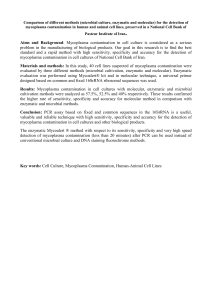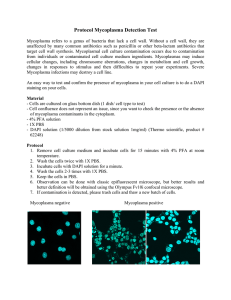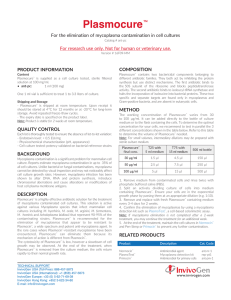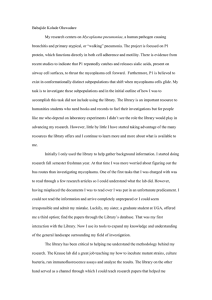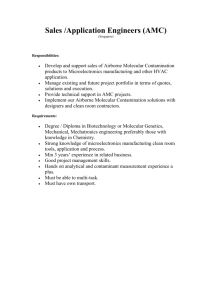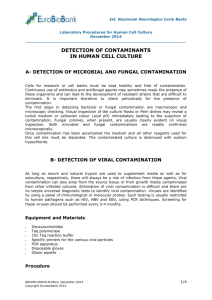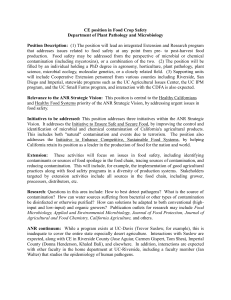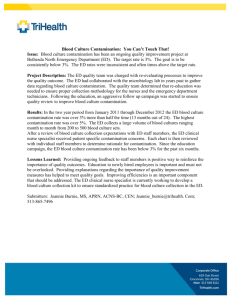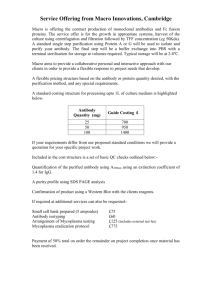microbial culture, enzymatic and molecular
advertisement
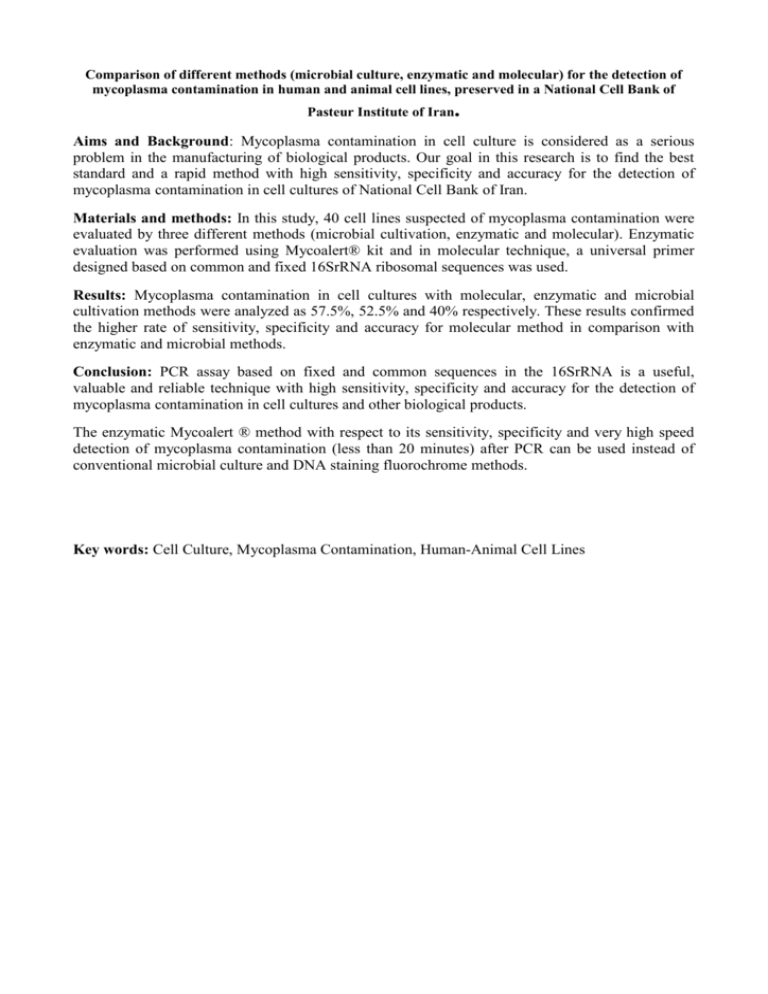
Comparison of different methods (microbial culture, enzymatic and molecular) for the detection of mycoplasma contamination in human and animal cell lines, preserved in a National Cell Bank of . Pasteur Institute of Iran Aims and Background: Mycoplasma contamination in cell culture is considered as a serious problem in the manufacturing of biological products. Our goal in this research is to find the best standard and a rapid method with high sensitivity, specificity and accuracy for the detection of mycoplasma contamination in cell cultures of National Cell Bank of Iran. Materials and methods: In this study, 40 cell lines suspected of mycoplasma contamination were evaluated by three different methods (microbial cultivation, enzymatic and molecular). Enzymatic evaluation was performed using Mycoalert® kit and in molecular technique, a universal primer designed based on common and fixed 16SrRNA ribosomal sequences was used. Results: Mycoplasma contamination in cell cultures with molecular, enzymatic and microbial cultivation methods were analyzed as 57.5%, 52.5% and 40% respectively. These results confirmed the higher rate of sensitivity, specificity and accuracy for molecular method in comparison with enzymatic and microbial methods. Conclusion: PCR assay based on fixed and common sequences in the 16SrRNA is a useful, valuable and reliable technique with high sensitivity, specificity and accuracy for the detection of mycoplasma contamination in cell cultures and other biological products. The enzymatic Mycoalert ® method with respect to its sensitivity, specificity and very high speed detection of mycoplasma contamination (less than 20 minutes) after PCR can be used instead of conventional microbial culture and DNA staining fluorochrome methods. Key words: Cell Culture, Mycoplasma Contamination, Human-Animal Cell Lines
